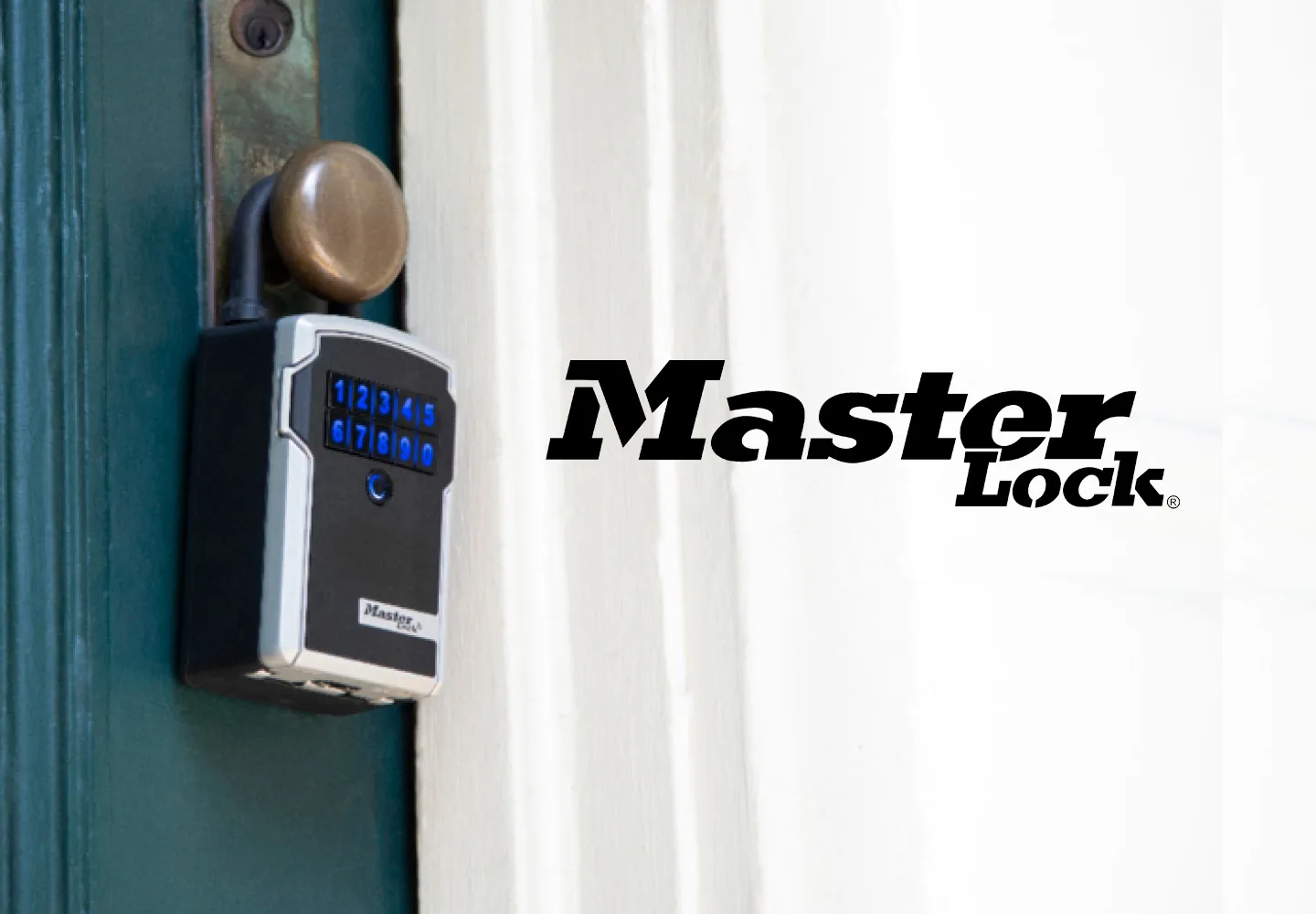In this guide, we’ll discuss:
- Where traditional showings fall short
- How to enhance showings with technology
- How to implement self-tour technology
- How to ensure safety with self-tours
- How to embrace the future of property management with tech innovations
In the ever-evolving landscape of real estate, property tours stand firm as the critical gateway to success in the real estate game. Like any first impression, the first tour of a vacant unit is pivotal in turning prospects into renters. This will simply never change – however, the challenges surrounding property tours are changing with the times for both landlords and potential renters. In this article, we’ll explain where the traditional property tour falls short in the digital age, the pros and cons of some technological alternatives, and the cost of investment to implement them.
Attracting and engaging individuals to explore listings requires thoughtful and inventive approaches. So what issues are standing in the way of renters and landlords when it comes to property tours? For renters, this includes limited availability, travel planning, access to transportation, organizing information and documentation to meet rental requirements, .
For landlords, their first problem will always be attracting interested, quality tenants. Once a unit has garnered interest, the biggest issues are scheduling and executing as many property tours as it takes to secure a tenant. And facing both: the tedious process of back-and-forth communication to settle on a time for a guided tour.
What are Virtual Tours?
Virtual tours of rental properties are digital, interactive representations of real estate spaces that allow potential tenants or buyers to explore the property remotely. They have become increasingly popular due to their convenience and in light of the pandemic, especially for prospective tenants who may not have the opportunity to physically visit the property. These are the most common formats for virtual tours:
- 360-Degree Tours: These provide an all-encompassing view of the property, allowing viewers to look around in all directions, mimicking the experience of being in the space.
- 3D Video Tours: Recorded walkthroughs that guide viewers through the property, showcasing key features, rooms, and amenities.
- Interactive Floor Plans: These allow users to click on different rooms or areas within the floor plan to see photos, videos, or descriptions of those spaces.
The Cost of Virtual Tours
The cost of creating a virtual tour for a rental property can vary significantly based on several factors:
- Technology and Equipment: Basic 360-degree cameras or smartphones with panoramic capabilities can create simple virtual tours. However, higher-quality tours require specialized cameras, such as DSLRs with wide-angle lenses or dedicated 360-degree cameras with stabilizing tech to prevent a shaky, handheld quality. Prices range from a few hundred dollars to several thousand dollars, used and new.
- Software and Hosting: There are low-cost platforms available for creating basic virtual tours. However, more advanced and feature-rich software will come at a higher sticker price. Pricing models depending on the service provider, either a subscription fee or by the number of tours you wish to host.
- Professional Services: Hiring a professional photographer or a company specializing in virtual tours can significantly impact the cost, but also produce the highest quality content.
- Property Size and Complexity: Larger properties or those with intricate features might require more time and effort to capture in a virtual tour, potentially increasing the cost.
As a rough estimate, creating a basic virtual tour using a smartphone or entry-level 360-degree camera could range from a few hundred dollars to around $1,000. However, for more professional-grade tours or larger properties, the cost could be several thousand dollars, potentially reaching upwards of $5,000 to $10,000 or more. There is an added cost for hosting the tour indefinitely, and/or using a service that allows interactive floorplans.
Consider the investment of your time as a cost with a virtual tour, as regularly updating the virtual tour to reflect the property’s current condition and maintaining it’s accessibility online is essential.
The Impact of Virtual Tours
While virtual tours are generally advantageous in attracting potential tenants, this report from Harvard Business School concludes that their biggest impact to efficiency and sales is satisfying searchers enough to refrain from pursuing it – sparing the investment of time and resources on arbitrary leads.
Additionally, there are several factors might potentially hinder the effectiveness of a virtual tour and, in turn, impact the likelihood of filling a rental property:
- Inaccurate Representation: If the virtual tour does not accurately represent the property, expect disappointment when prospective tenants visit the property in person.
- Poor Quality or Presentation: Blurry images, distorted views, or glitches in the tour form a negative impression of the property and diminish interest.
- Technical Issues or Accessibility: Difficulties in accessing the virtual tour or compatibility issues with devices can frustrate potential tenants, leading them to abandon the viewing experience altogether.
- Over-Reliance on Virtual Tours: Relying solely on virtual tours without offering alternative viewing options (such as in-person tours or additional property information) might limit the accessibility of the property to a segment of potential tenants who prefer different viewing methods.
It’s crucial to ensure that the virtual tour accurately represents the property, is of high quality, provides comprehensive information, and is easily accessible across different devices. Additionally, offering multiple viewing options, including in-person tours or additional property details, can complement the virtual tour and cater to a wider audience of potential renters.
Final Thoughts on Virtual Tours
While virtual tours can give your listing an advantage over those that lack one, they won’t be fully replacing an in-person tour anytime soon. While the investment in a high-quality virtual tour can pay off – it usually acts as an appetizer where the physical tour is a main course: it doesn’t fully satisfy most potential renters but makes it more likely that they will schedule a visit versus a listing without a virtual tour available. If your properties tend to attract unqualified applicants, virtual tours are a great tool for preventing unnecessary investments of time and resources.
There are ways a virtual tour can hurt more than help, so if they are to be done at all, it’s worth the investment for a high quality user experience. Today’s tenants are short on time but skilled in their research process – virtual tours are a lucrative move for properties that have high turnover rates or units that have sat vacant long enough to warrant changing tactics to get it filled.
What are Self-Tours?
A “Self-Tour” refers to a process where prospective tenants or buyers can tour a property on their own, without the presence of a real estate agent or landlord. Given the prevalence of mobile phone use in property searches, the trend towards self-touring aligns seamlessly with consumer preferences. Property managers are observing a rising popularity in self-guided property tours, especially among tech-savvy renters accustomed to on-demand experiences.
A robust Self-Tour Application automates these tasks:
- Advertising Listings: Property managers upload the listing description and photographs for available units and set the parameters for visitation.
- Scheduling Tours: Prospective tenants or buyers schedule Self-Tours through an online platform or app. They choose a convenient time slot to visit the property and may not need to directly communicate with the property managers at all.
- Access: Some Self-Tour systems utilize smart locks or lockboxes to provide access to the property during the scheduled time.
- Exploration: Once inside the property, visitors can freely explore the space at their own pace. They can spend as much time as they need in each room, evaluating the property’s suitability without feeling rushed.
Follow-Up: After the Self-Tour, interested visitors may contact the listing agent or property manager for further inquiries or to proceed with the rental or buying process.
The Advantages of Self-Tours
Self-Tours offer several advantages for both potential tenants/buyers and property managers/landlords. Here are the obvious ones:
- Flexibility: Visitors can schedule tours at their convenience, including evenings or weekends, without being tied to an agent’s availability.
- Privacy: Prospective tenants or buyers can explore the property without feeling pressured or influenced by a real estate agent.
- Efficiency: Self-Tour save time for landlords by eliminating the need to be physically present for every showing, and the time it takes to schedule a guided tour in the first place.
- Low-Cost: Various pricing models are available with this service. There is a hard cost for hardware, with smart lockboxes ranging from around $75 – $300, and smart cameras in the same range. The cost of the software may be subscription-based or based on the amount of tours a property manager would like to offer. Using some services, property managers can even charge visitors per tour. Between this option and the spared time and resources, the service truly pays for itself.
Are Self-Tours Safe?
Allowing solo access to vacant units tends to set off red flags. However, with the latest developments in Self-Tour applications, every worry is quelled with sound technology. Here is how the top-of-the-line Self-Tour apps not only ensures the safety of all involved parties and property:
Security Concerns:
- Verified Users Only: Proof of identity is required in order to register, capturing identification via driver’s licenses, passports, and state ID cards and requiring a selfie that matches the ID photo. Before becoming fully verified, the application then runs background checks on the individual.
- Additionally, users can upload other tenant application requirements such as pay stubs or loan documents that the property managers may mark as required for scheduling a tour at all.
- Point of Access: Using location data, the app can recognize when the visitor’s device arrives at the property for a scheduled tour. Prior to allowing entry, real-time identity verification is required in the form of a selfie that matches their verified identification. The most secure procedure requires a biometric verification with a “liveness” check, capturing a blink during selfie capture, making sure that it truly is the authorized visitor holding the device on the doorstep.
- Some applications transfer a lockbox access code to the visitor’s phone. It is to be noted that access codes are shareable with unauthorized parties, completely compromising security. Therefore bluetooth access to the lockbox is the safest method of granting access to a property.
- Property Condition: Without a representative present, there might be a risk of damage or misuse during the visit. There are three ways Self-Tour Technology can offer protection here:
- Smart Camera Compatibility: linking exterior and interior smart cameras on the property allows surveillance in real time, and can also enable communication between the visitor and the property manager.
- Chain of Custody Recording: logging the access record with exact timestamps and information regarding the smartphone used to trigger the tour.
Insurance Policy: with homeowner’s insurance, all property showings, including Self-Tours, are insured.
Citations
Bachaud, Nicole. “A Blend of Stability and Gradual Changes in the U.S. Rental Market (November 2023 Rental Market Report).” Zillow, 8 Dec. 2023, www.zillow.com/research/november-2023-rent-report-33470/.
Layne, Rachel. “Are Virtual Tours Still Worth It in Real Estate? Evidence from 75,000 Home Sales.” HBS Working Knowledge, Harvard Business School, 5 Dec. 2023, hbswk.hbs.edu/item/are-virtual-tours-still-worth-it-in-real-estate-evidence-from-75000-home-sales#:~:text=Virtual%20tours%20helped%20propel%20homebuying,property’s%20time%20on%20the%20market.
Peat, Jack. “Modern Consumers Have Developed a ‘I Want It Now’ Attitude.” The London Economic, 28 Aug. 2018, www.thelondoneconomic.com/news/modern-consumers-have-developed-a-i-want-it-now-attitude-99798/.
Final Thoughts on Self-Tour Technology
Self-Tours represent a shift in the real estate industry toward more self-service options, affordably providing convenience and flexibility for both property seekers and managers while presenting some challenges that need to be managed effectively and securely. Already we are seeing the technology capable of meeting every concern with a sound answer, and the savings of time and resources advantageous to all landlords and property managers. Making the transition to Self-Tours is simply a matter of “when” and “how”, not “if”. It’s simply the future of property management, a necessary step to further success in real estate, and lucrative to add to your business practices as early as possible.





